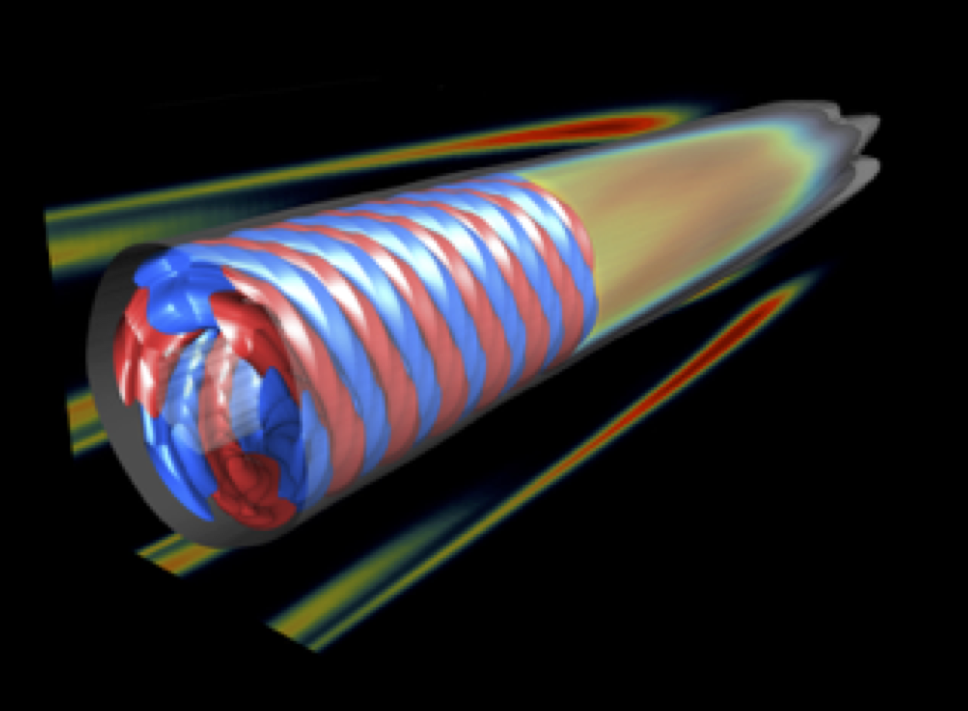Optical tornados in Nature Communications
A new paper in Nature Communications by Jorge Vieira et al. in the January 2016 issue demonstrates how to amplify optical tornados to unprecedented intensities. The paper generalizes the concept of Raman amplification to laser pulses with orbital angular momentum.
Optical tornados have applications in compact accelerators and brilliant x-ray sources, faster optical communication devices, and optical computing.
Research led by a team at the Instituto Superior Técnico in Lisbon, Portugal and the Rutherford Appleton Laboratory in the UK, found an novel way of creating intense optical tornados, unusual forms of laser light beams that spin during propagation. This discovery was published on January 28th in the journal Nature Communications.
Optical tornadoes, i.e. laser beams with a vortex structure, may revolutionise our understanding of how matter behaves under extreme and so far unexplored conditions. At ultrahigh intensities, however, their production in the laboratory remains a challenge. The published paper proposes an innovative solution proven at the theoretical level. Researchers from the Instituto Superior Técnico and DCTI/ISCTE in Lisbon, from the STFC Rutherford Appleton Laboratory, and from the Universities of Oxford and Strathclyde in the UK, took advantage of the optical properties of plasmas, a soup of ions and electrons that interact through electric and magnetic fields.
In this work researchers explored a way to create the optical analogue of a tornado from a very low energy laser beam and demonstrated amplification to high energy. The research team devised a new theory that described this process, and carried out advanced numerical simulations to test their ideas in a virtual laboratory. The numerical simulations were performed using SuperMUC, one the fastest super-computers in Europe based at the Leibniz Research Centre in Munich, Germany.
One of the authors Jorge Vieira, described this work “as opening new and exciting perspectives for compact plasma based accelerators and light sources that may be useful not only from a purely scientific point of view, but one that could also have applications, e.g. in medicine or astrophysics. In addition, our results also strongly demonstrate that amplification of these optical signals in optical fibers is possible, a significant result that may benefit ultrafast optical communications.” The broad implications of the results have far reaching potential, and according to one of the other authors Raoul Trines the paper “embodies ideas that shares connections with research topics in fluid dynamics and also quantum optics, a research field that promises a new type of quantum computer with immense power.”
This research describes new pathways for amplification of intriguing new forms of light beams and experiments are already being planned.









